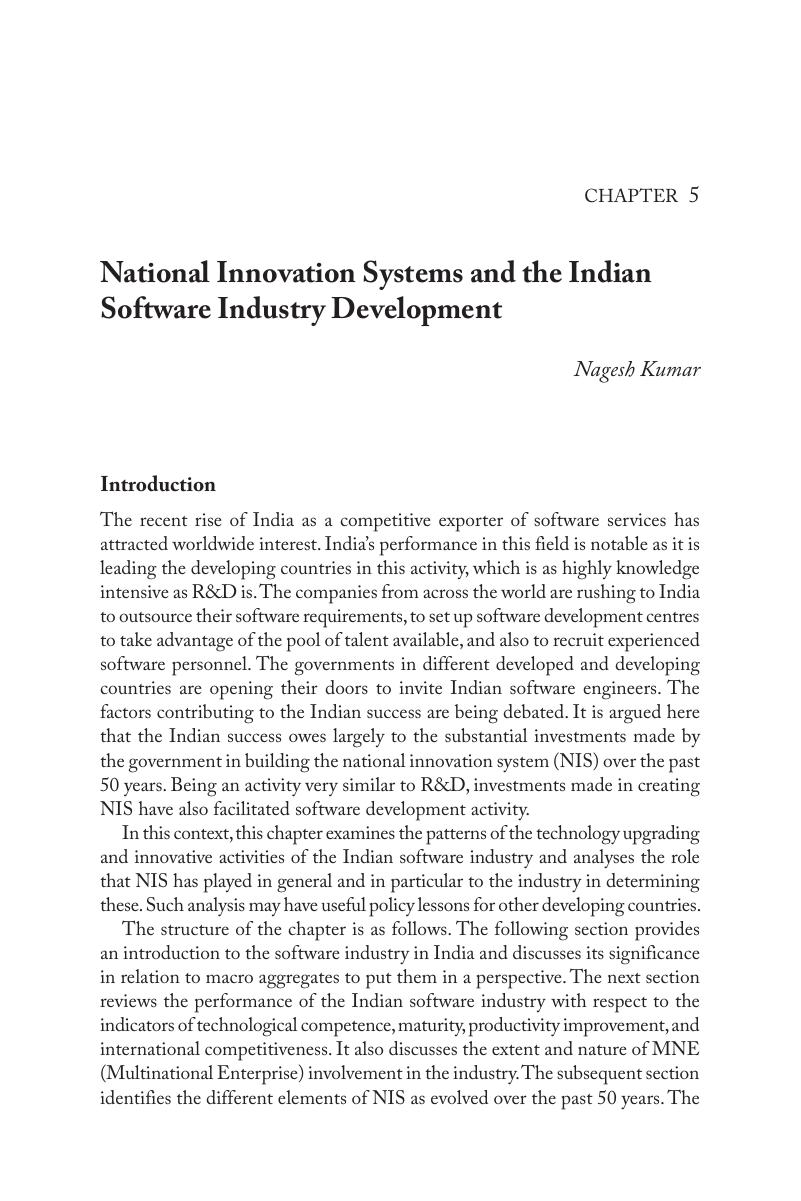Book contents
- InnovationinIndia
- Copyright page
- Dedication
- Contents
- List of Figures
- List of Tables
- Prologue
- Chapter 1 Innovation in India
- I Setting the background
- II Sectoral studies
- Chapter 4 Innovations in Indian Seed/Biotech Industry
- Chapter 5 National Innovation Systems and the Indian Software Industry Development
- Chapter 6 The Secret behind India’s Success in Pharmaceuticals
- Chapter 7 Nanoscience and Nanotechnology
- Chapter 8 Energy Innovation (sub)Systems in India
- III Innovations for inclusive development
- Contributors
- Index
- References
Chapter 5 - National Innovation Systems and the Indian Software Industry Development
from II - Sectoral studies
Published online by Cambridge University Press: 05 July 2014
- InnovationinIndia
- Copyright page
- Dedication
- Contents
- List of Figures
- List of Tables
- Prologue
- Chapter 1 Innovation in India
- I Setting the background
- II Sectoral studies
- Chapter 4 Innovations in Indian Seed/Biotech Industry
- Chapter 5 National Innovation Systems and the Indian Software Industry Development
- Chapter 6 The Secret behind India’s Success in Pharmaceuticals
- Chapter 7 Nanoscience and Nanotechnology
- Chapter 8 Energy Innovation (sub)Systems in India
- III Innovations for inclusive development
- Contributors
- Index
- References
Summary

- Type
- Chapter
- Information
- Innovation in IndiaCombining Economic Growth with Inclusive Development, pp. 143 - 185Publisher: Cambridge University PressPrint publication year: 2014
References
Select Bibliography
- 5
- Cited by



